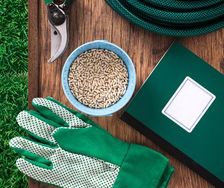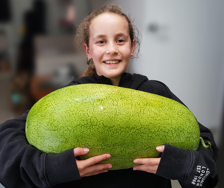Yates Account
Join now
Create a Yates account today!
Sign up to join the Yates Garden Club for monthly e-mails packed with seasonal inspiration, tips for success & exclusive promotions.
Plus if you’re a Garden Club member you can take part in the Yates Growing Community - a blog to share successes, get advice & win prizes in fun challenges along the way!

Forgot password
Enter the email address associated with your account, and we'll email you a new password.
Thysanoptera

What are Thrips?
There are 7,400 species of thrips in the world and quite a few are serious pests of plants. The most commonly encountered species in NZ are Greenhouse Thrips (Heliothrips haemorrhoidalis), Western Flower Thrips (Frankliniella occidentalis) and Onion Thrips (Thrips tabaci).
Thrips attack the flowers, fruit and foliage of a wide range of vegetable crops and ornamental plants. Roses, fruit trees, azaleas, gladioli and a variety of vegetables such as tomatoes, onions and beans all suffer from thrip attacks. They also feed on a wide range of weeds. Thrips are 0.5mm – 15mm long, ranging in colour from white through yellow and brown to black. Thrips generally have fringes on their wings, but this can only be seen with magnification.
During hot weather, host weeds dry up and the insects migrate to more attractive plants. Thrips lay eggs inside plant tissue, where their hatched-out nymphs also feed on plant sap. Thrips also lay eggs inside unopened buds, which makes it difficult to control them with contact insecticides.
Thrips also spread plant viruses in their saliva while they feed; in NZ they are the cause of tomato spotted wilt virus (TSWV).
Symptoms
Thrips scrape the surface of the leaves and petals with their rasping mouthparts, then suck the sap out of the plant cells. The resulting damage leaves a distinctive silvery-white mottled appearance on leaves.
Thrips excrete a waste material called "frass", that looks like tiny black specks on infested leaves or flowers.
Other symptoms are small white flecks on petals, browning on petals and fruit, and flower drop. If left unchecked the leaves, new shoots and flowers will become deformed and stunted. Wilting and browning of foliage can also occur.
How to protect your plants
Remove rocks, pots, pipes or any protected area which they may use as shelter during the day.
Plants impacted
- Roses
- Fruit trees
- Azaleas
- Gladioli
- Tomatoes
- Onions
- Beans
















Share
Share this article on social media